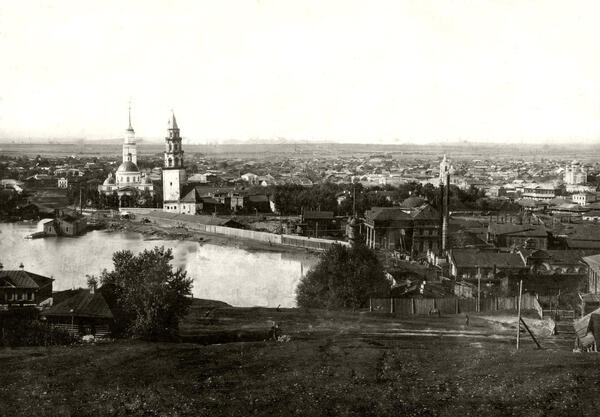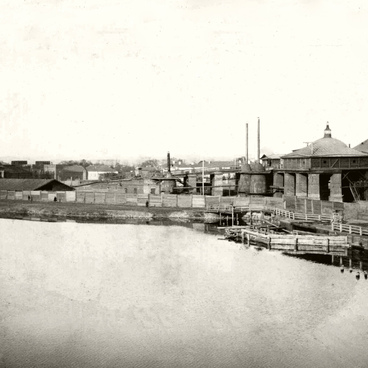By the beginning of the 20th century, a major industrial crisis broke out in the Urals. Metal prices fell catastrophically and turned out to be unprofitable for many Ural enterprises. As a result, factory products were not sold. Factories in the Nevyansk mining district were forced to reduce the amount of output. In the second half of the 19th century, the blast furnace at the Nevyansk plant was replaced by a newly opened mechanical factory with forging, metalworking, and boiler production. Later, a pipe foundry and a bolt factory appeared. At the beginning of the 20th century, metallurgical production was over, and blast furnaces stopped working. Subsequently, the blast furnace buildings were rebuilt inside and out and housed factory offices. The Nevyansk plant began to specialize in the production of mechanical products.
There have been changes in the architectural and urban plan. Trade shops filled the Trade Square and began to form the northern part of the factory village. Not far from the Leaning Tower and the manor house, an extensive garden with lawns was laid out. Apple trees, pear trees, birch trees, linden trees, and cedars grew in the garden. The garden, like the manor, was surrounded by a stone fence with patterned cast-iron railings and decorative cast-iron vases.
The Cathedral Square continued developing (it began with the Church of the Transfiguration). Nearby there was a monument to the factory owner Savva Yakovlev, who bought the Nevyansk factory from Prokofiy Demidov in 1769. A cast-iron column was mounted on huge stone blocks, and a bronze bust of Savva Yakovlev was installed on top.
At the beginning of the 20th century, a brick wall was built in the immediate vicinity of the tower and the main entrance to the plant was decorated with monumental gates and walk-through booths. A wall and a gateway connected the Leaning Tower with the manor house complex. In general, at the beginning of the 20th century, the layout of the Nevyansk plant retained the historically valuable type of water-powered metallurgical enterprise, despite the technological changes that had occurred.



